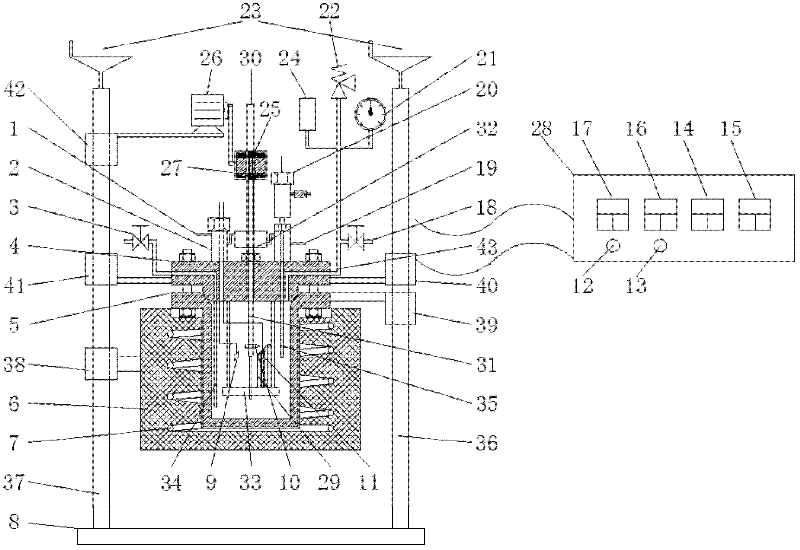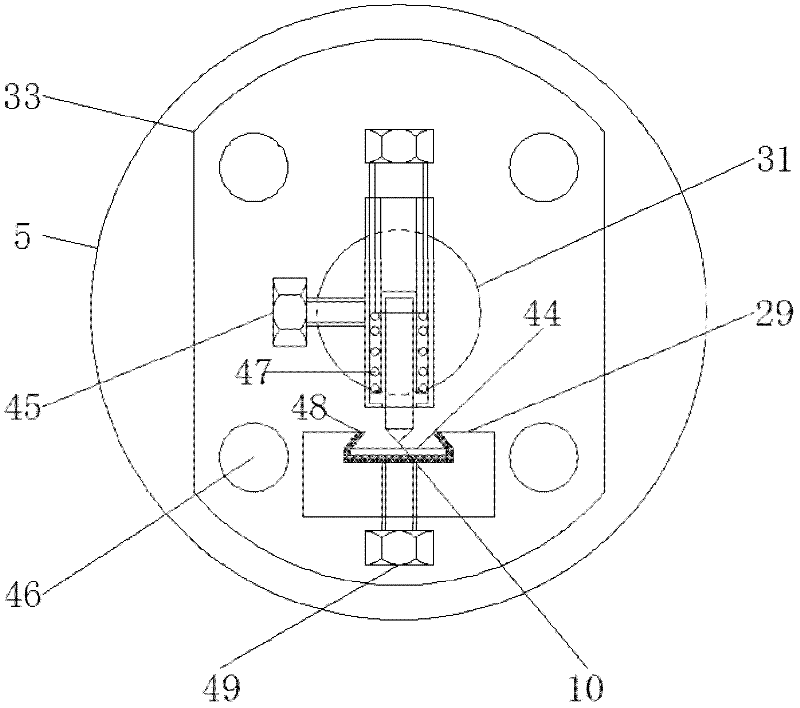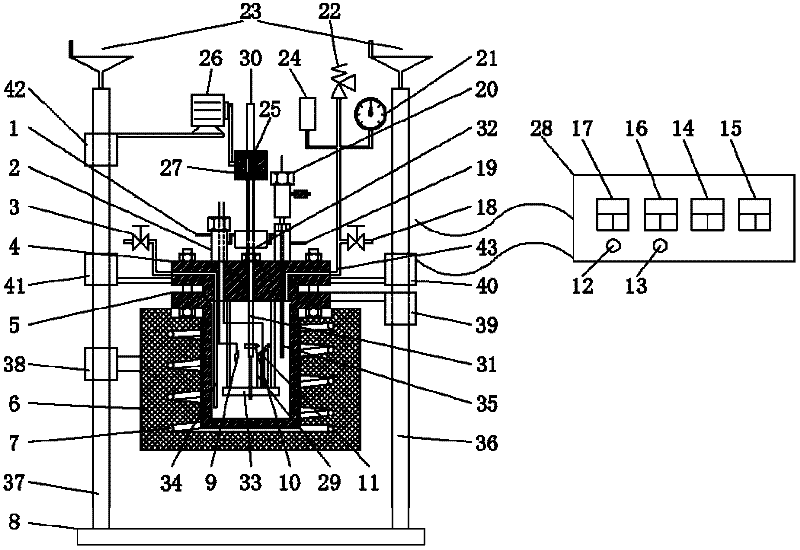A high temperature and high pressure in-situ scratch and corrosion wear test device
A corrosion and wear test, high temperature and high pressure technology, applied in the direction of testing wear resistance, etc., can solve the problems of difficult corrosion and wear, high temperature and high pressure environment insulation difficulties, etc., to achieve the effect of high control precision, easy disassembly and maintenance
- Summary
- Abstract
- Description
- Claims
- Application Information
AI Technical Summary
Problems solved by technology
Method used
Image
Examples
Embodiment Construction
[0031] Such as figure 1 As shown, the high temperature and high pressure in-situ scratch and corrosion wear test device of the present invention is equipped with: cooling water outlet 1, high temperature working / auxiliary electrode seat 2, liquid phase valve 3, autoclave cover 4, autoclave body 5, heating furnace 6 , Furnace wire 7, bracket 8, auxiliary electrode 9, hard alloy scratch head 10, working electrode 11, frequency converter switch 12, heating power switch 13, heating voltage regulator 14, pressure display 15, temperature controller 16, frequency converter 17. Gas phase valve 18, cooling water inlet 19, high temperature reference electrode 20, pressure gauge 21, safety valve 22, manual lift plate 23, pressure sensor 24, inner magnetic steel 25, motor 26, outer magnetic steel 27 and control box 28 etc., the specific structure is as follows:
[0032] The autoclave is composed of an autoclave body 5 and an autoclave cover 4, the autoclave cover 4 is arranged on the aut...
PUM
 Login to View More
Login to View More Abstract
Description
Claims
Application Information
 Login to View More
Login to View More - R&D
- Intellectual Property
- Life Sciences
- Materials
- Tech Scout
- Unparalleled Data Quality
- Higher Quality Content
- 60% Fewer Hallucinations
Browse by: Latest US Patents, China's latest patents, Technical Efficacy Thesaurus, Application Domain, Technology Topic, Popular Technical Reports.
© 2025 PatSnap. All rights reserved.Legal|Privacy policy|Modern Slavery Act Transparency Statement|Sitemap|About US| Contact US: help@patsnap.com



